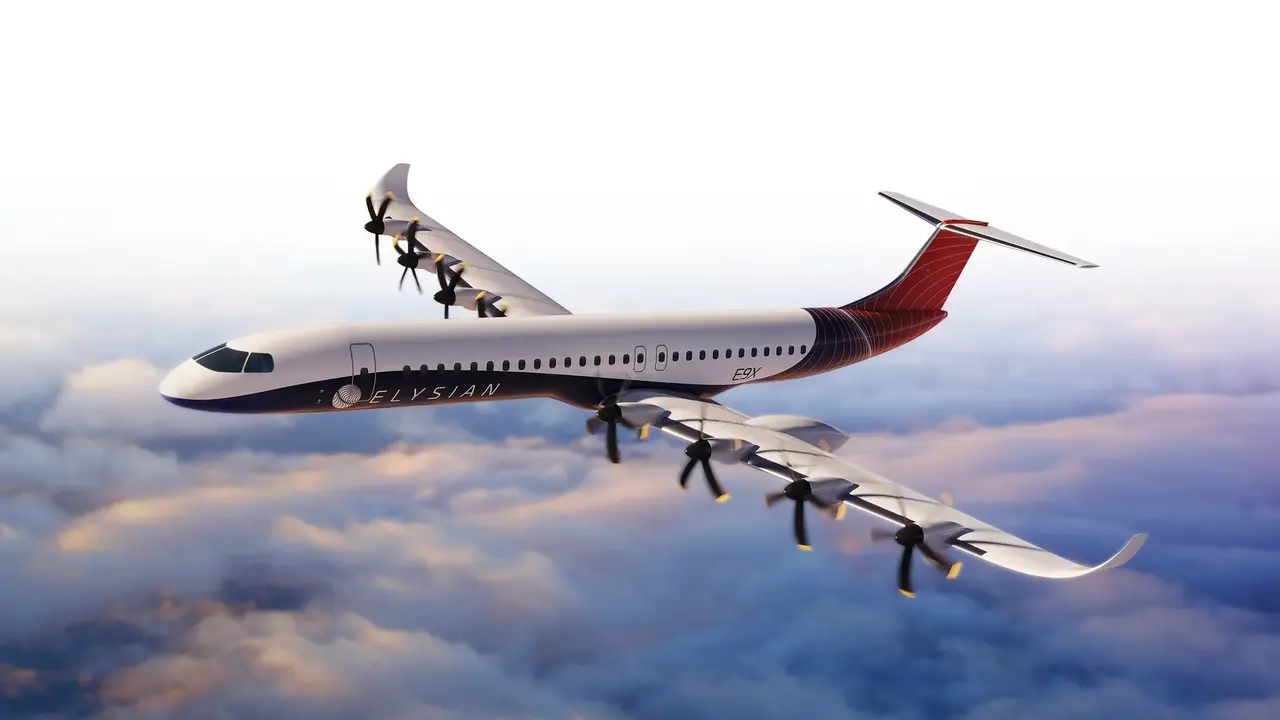Elysian isn’t planning any major leaps in battery technology for its E9X planes. Instead, they believe current improvements, such as the 450 Wh/kg Amprius cells and the 500 Wh/kg “condensed” CATL battery, are sufficient to achieve the original goals. With further improvements, a flight range of 1,000 km is predicted; This will cover half of all scheduled commercial flights.
Batteries are currently considered unsuitable for large aircraft due to weight restrictions. Elysian counters that this view stems from modern, high-efficiency designs based on traditional jet engines. They argue that inspiration should be taken from the 1960s, when less efficient aircraft required more fuel, similar to the energy needs of batteries.
To optimize battery performance, the E9X will have a smaller fuselage and longer wings than conventional jets. The low-mounted wings and rear landing gear, which accommodates most of the battery mass, are designed to reduce the weight of the airframe and reduce air resistance by 15%, which will increase flight range.
With $10 million backing from Panta Holdings, Elysian plans to make its first flight in 2033. However, the mammoth task of developing, prototyping, testing and certification of an unconventional aircraft requires billions of dollars, presenting a major hurdle.
Source: Ferra
I am a professional journalist and content creator with extensive experience writing for news websites. I currently work as an author at Gadget Onus, where I specialize in covering hot news topics. My written pieces have been published on some of the biggest media outlets around the world, including The Guardian and BBC News.










